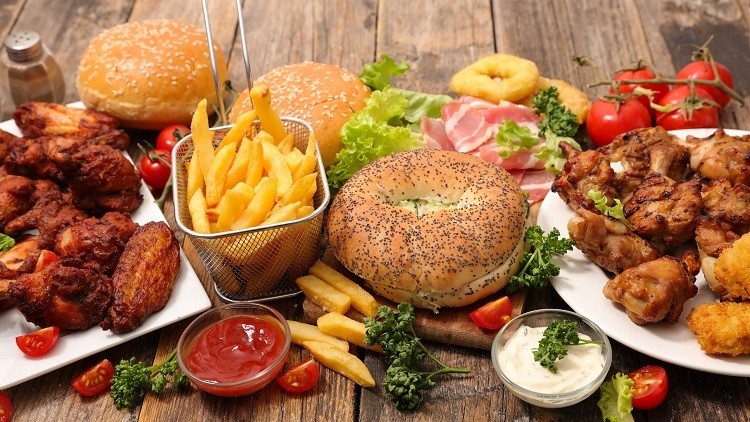
A good health cooking guide should be filled with recipes and tips that are easy to prepare and taste delicious. Recipes can be both healthy and beneficial to your life. It is possible to make delicious meals from whole foods. Here are a few ideas that can help you get started. First, make your own meals. You will be able to save money while eating healthy. The second tip is to make sure you are getting enough protein and fiber.
A second important tip is to reduce the amount of food you eat and to shorten your cooking time. It can be hard to cut back on how much food you eat, especially if you are cooking for yourself. Keep your portion sizes in check. One dish will be less expensive than two meals of full-sized pizza. It will help you to have the energy and time to prepare your own meals, which will allow you to focus on your business.

It's a great tip to help you improve your health by sharing photos of your homemade meals on social media. Whether you're a beginner or a seasoned pro, finding people who have a similar diet and lifestyle as you can inspire you to cook for others. It is a great way expand your culinary horizons and to try new recipes. It's a wonderful way to get the validation and support you need for a healthy eating plan.
Study of health cooking videos shared on social media found that it is an effective way to encourage and educate young adults. While participants reported they would make the recipes at home, they also indicated that they would need to be tested on their ability to follow the instructions. The ability and motivation to make the recipes at home was key for success in changing behavior, according to the authors. Apple Corp. developed iMovie, a video editing program, to create the videos.
These videos were also a great way for kids to learn about healthy cooking and eating. The video is fun and informative. Participants found them helpful and useful. A few cooking videos featured a Spanish speaker peer-promoter. Focus groups liked the voiceover, the background music and the presentation. The video is informative and makes a positive impression on children.

To encourage children to learn more about cooking, it is a good idea to help them grow vegetables. This can be a subtle push to encourage them to eat healthier foods. There are no age restrictions for children who want to cook at home. Healthy eating is a good choice. This program has also expanded to include a robust Health Promoter Program. The program trains volunteers how to become health advocates for their community. Its purpose is to prepare them to teach health cooking classes.
FAQ
Can I go to the gym seven days a week?
Yes, you can go to a gym seven days per week. But not all at once. You need to find a time that you are able to do this without feeling exhausted or drained.
This will help you stay motivated and keep you energized for other activities.
You also need to ensure that you eat well enough during these times. This will make it so you don't feel tired or sluggish while going to the gym.
You must ensure that you don't have any other competing demands on your time. For example, if you have children, you may want to avoid exercising on school nights as they will distract you from your workout.
What is a good daily gym routine?
Regular exercise is essential to staying fit. It doesn't matter which type of fitness you choose, as long as it is done regularly. Consistency and consistency are the keys to success. You must be consistent if you are to see results.
Begin with a small amount of daily exercise (like walking). Start by walking for a few minutes every day. Gradually increase your time exercising to 30 minutes per week. You could do this by running, swimming, weight training or yoga.
It's important that you get your exercise done every day. Don't miss any sessions unless you have an excuse.
Make sure to wear appropriate clothing and footwear for outdoor exercise. Weather conditions can also affect your ability and safety to exercise.
While exercising, make sure to drink plenty water. Avoid drinking alcohol during this time because it can cause dehydration. Avoid caffeine-rich drinks like coffee, tea, and coca. They can provide energy, but they also dehydrate.
After your first exercise, you may feel tired. However, if you continue with your program, you'll soon feel more energetic and refreshed.
What is your favorite workout order?
It depends on what you are looking for. You should start with heavy weights if your goal is to build muscle mass. Then, move on to cardio. If you are looking to lose weight, then move on to strength training.
Start with cardio if you only want to lose fat. Next, add strength training.
Do cardio first if you are looking to increase muscle mass. It stimulates growth hormones that help build muscle mass.
Also, eat before you workout. You will be able to give your muscles more fuel so they can work harder. This will make you feel better while working out.
Statistics
- An estimated calorie range for moderately active adult males falls between 2,200 to 2,800 calories per day, depending on age. (eatright.org)
- According to the American Heart Association, blood pressure should be checked at least once every two years, beginning at age 20. (my.clevelandclinic.org)
- Get free shipping and 25% off today. (healthline.com)
- By John Thompson Take a whopping 38% off a set of PowerBlock Pros. (menshealth.com)
- 10 pounds in a month is likely during a lean bulking phase, especially for beginners. (muscleandstrength.com)
External Links
How To
How can I burn fat while exercising?
Exercise can help you burn calories and increase your metabolism.
Moderate intensity exercise is a safe way to lose weight.
These tips will help you burn fat and keep fit while exercising.
-
Cardio exercises include swimming, running or cycling.
-
Exercise for 30 minutes three times per week.
-
Strength training is a great way to lose weight.
-
Avoid intense workouts. It is possible to build muscle without destroying muscle tissue.
-
When exercising, make sure to drink lots of water. Water flushes out toxins and helps keep the body hydrated.
-
Choose low-fat protein shakes after working out. Protein shakes boost energy and repair muscle tissue.
-
Eat smaller meals throughout the day, so you don't feel hungry between meals.
-
Don't skip breakfast! You can feel tired and slow if you skip breakfast.
-
Take care of your mental health. Stressful situations can affect your metabolism.
-
Keep a positive attitude. Studies show that overweight people are more likely to be obese than those who perceive themselves as attractive.
-
Sleep enough. It is harder to lose fat if you don't get enough sleep.
-
Keep active. Move around at least once an hour.
-
Maintain a healthy diet. Eating right keeps you feeling full and satisfied longer.
-
Find ways to relax. Tenseness can cause stress hormones to break down muscle tissue.
A balanced diet is one that includes all of the essential nutrients required for growth.
Eat six small meals each day instead of three large ones. This gives your body the time it needs to process what you've eat.
For strong bones, we need 500 mgs of calcium daily. Calcium can be found as a dairy product such as milk, yogurt and fortified soy drinks, orange juices, cereals, breads, and cereals.
Calcium is found in leafy vegetables, beans and tofu, as well nuts, seeds and cheese.
Vitamin D is essential for calcium absorption. Vitamin D can also be found in some fortified foods such as eggs, fish, and yolk.
Vitamin E is vital for your skin's health. It's found in vegetable oils, wheat germ oil, peanuts, almonds, sunflower seeds, and corn.
Your body requires zinc to function normally and for wound healing. Zinc can be found as a mineral in oysters.
Zinc deficiency can cause fatigue, loss of appetite, depression, and impaired immunity.
Consuming too much sugar can cause insulin resistance. This causes an increase in blood glucose levels. Insulin resistance is linked to weight gain.
Insulin resistance is caused by high blood levels of free-radicals. Free radicals are molecules containing unpaired electrons which cause damage to cells membranes.
Food additives, pesticides and herbicides, as well as preservatives, smoking and radiation are all sources of free radicals.
Free radical damage can lead cancer, heart disease or diabetes, arthritis, asthma, or other forms of aging.
A well-balanced diet rich in antioxidants is the best way for you to avoid free radical damage. Antioxidants protect against oxidative damage.
Antioxidant vitamins include Vitamin C (found in citrus fruits), beta carotene (found in carrots, sweet potatoes, spinach, broccoli, cantaloupe, apricots, squash, mangoes, peaches, peppers, tomatoes, cabbage, cauliflower, kale, Brussels sprouts, collard greens, watermelon, and strawberries), and Vitamin E (found in nuts, olive oil, avocados, and eggs).
Selenium, manganese (and zinc) are other antioxidant nutrients.
Selenium protects cells against oxidative damage from free radicals. Selenium can be found in Brazil nuts and liver, kidneys, liver, kidneys, shrimp, cod, turkey and lamb as well as chicken.
Copper protects eyes, brain, lungs and red cells. Copper can be found in shellfish and poultry as well as meat and organ meats.
Manganese is an essential component of bone structure. Manganese can be found in brown rice and spinach as well as bananas, prunes raisins, oatmeal, lentils, and oatmeal.
Zinc is required for normal growth, reproduction and wound healing. Zn can also be found in white fish, lean cuts of meat, poultry, and eggs.